
Sight size: 7½” x 33½” • Framed size: 12” x 38” • SOLD
Occasionally we offer significant needlework that is outside of our speciality of 18th and early 19th century schoolgirl samplers, and we are very pleased to be able to present this extremely rare and very early example. This Buratto panel is a tour de force of needlework; additionally, it is highly arresting from an aesthetic standpoint.
The word buratto refers to both this technique, in which fine thread, in this case linen, is stitched onto a woven net-like ground, as well as to the ground fabric itself. We have come across other names to describe this type of very fine needlework – punto tirato and punto sfilato.
Most notably, our example is almost identical, and similar in its dimensions, to a Buratto panel in the collection of The Metropolitan Museum:

Date: 16th century Culture: Italian, possibly Sardinia
Medium: Embroidered net, buratto
Dimensions: L. 32 x W. 10½ inches Classification: Textiles-Laces
Credit Line: Gift of Mrs. J. Boorman Johnstone, 1906
Accession Number: 06.550
Both our Buratto and that in the Met Museum depict nearly identical, highly complex and fascinating pictorial scenes. Shown below is our example’s depiction of stylized people, likely in battle, standing along the upper register with bows, arrows and spears.

Some are on horseback and there are also falconers on horseback. Two fallen men are shown horizontal below this line of warriors and above each castle. The castles have crenelated towers and rooftops, and several men stand guard while surrounded by ships (left). Wording is stitched at the top of the masts of the largest ships (right).
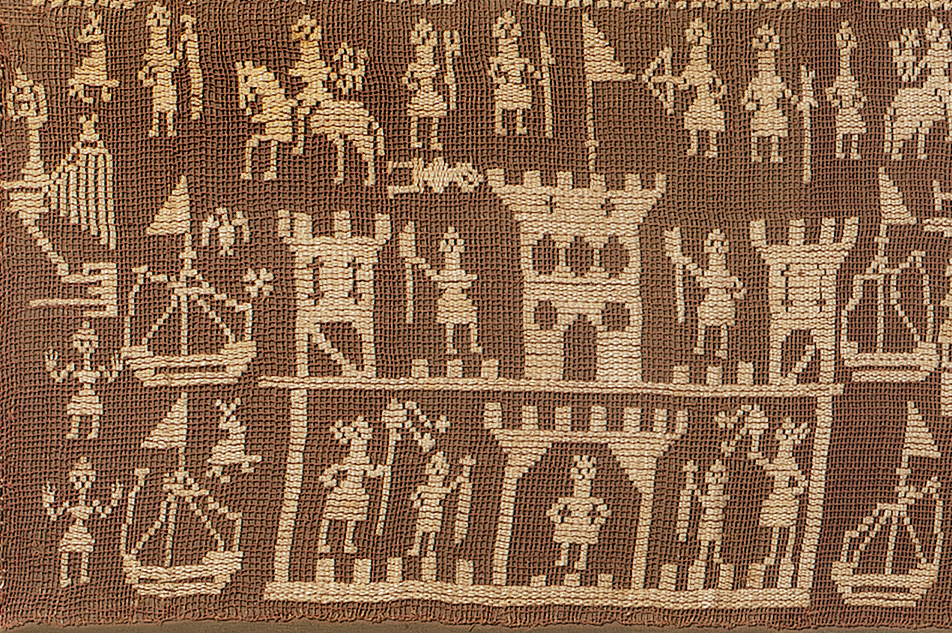
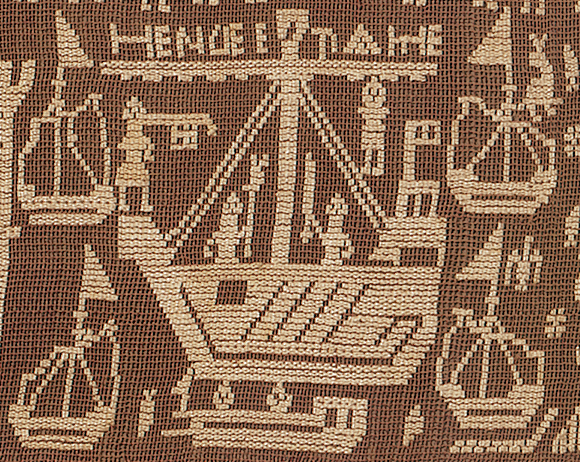
A large central female figure dominates the composition. She wears a Christian headpiece that is flanked by angels.
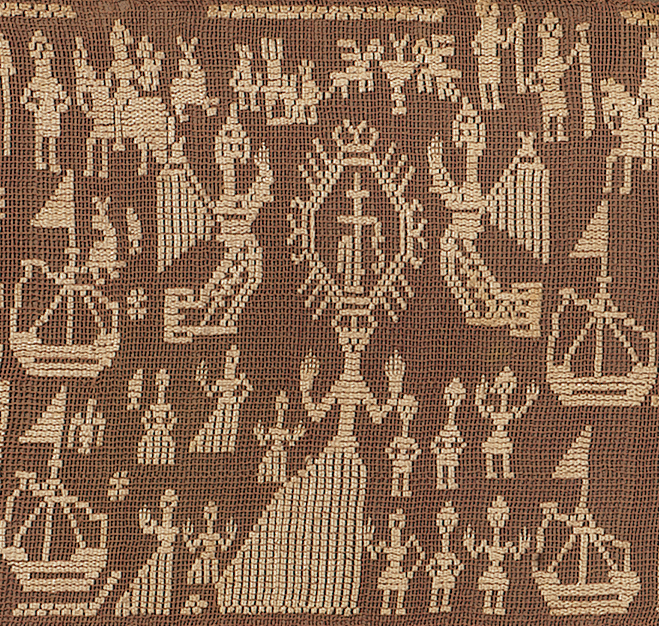
Below are a series of side by side comparisons between our piece (left) and The MET Museum’s (right) which indicate their similarities. These may have been stitched at the same time or by the same needleworker or needleworkers.
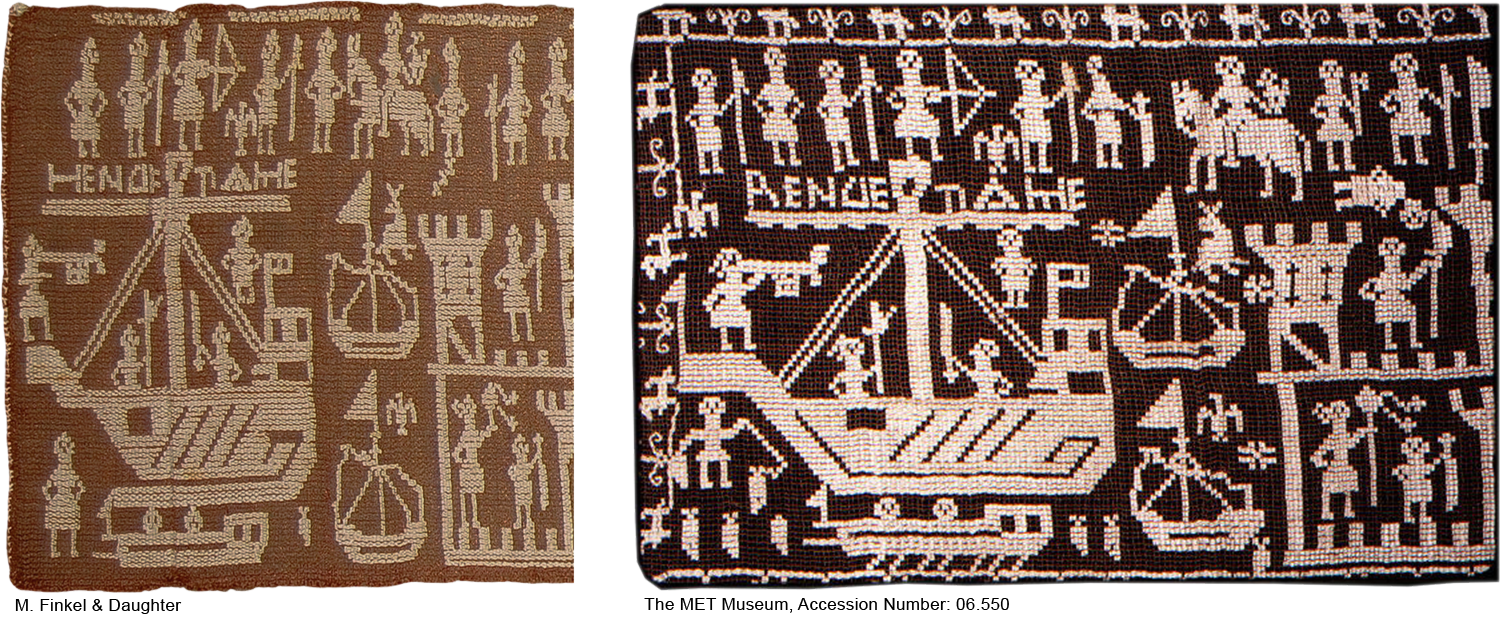
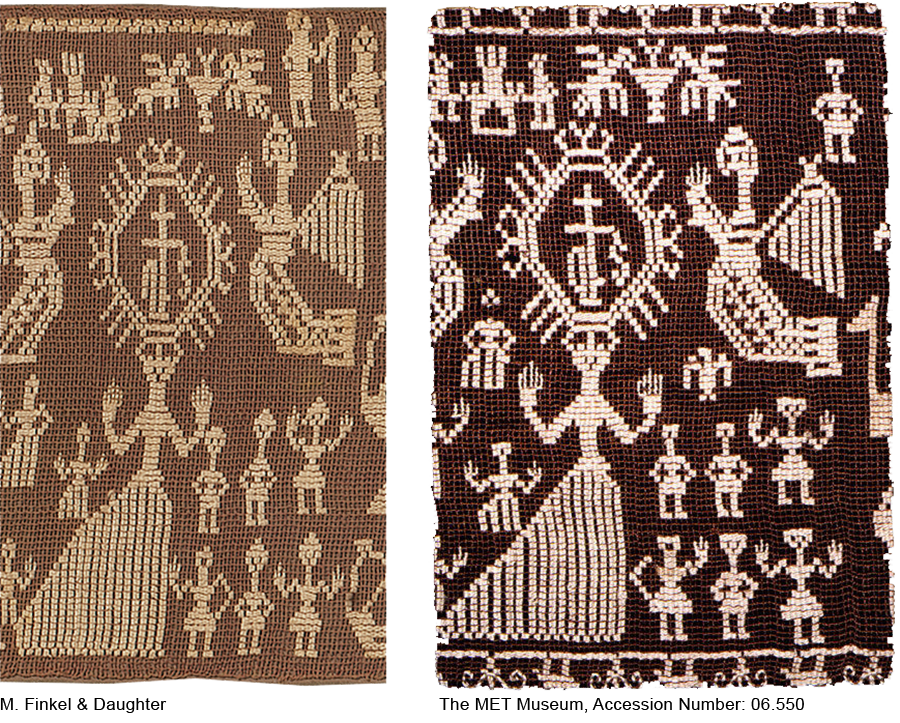

Presenting similar motifs to ours and the MET’s, is a Buratto found at The Rundāle Palace Museum in Italy, featured below.
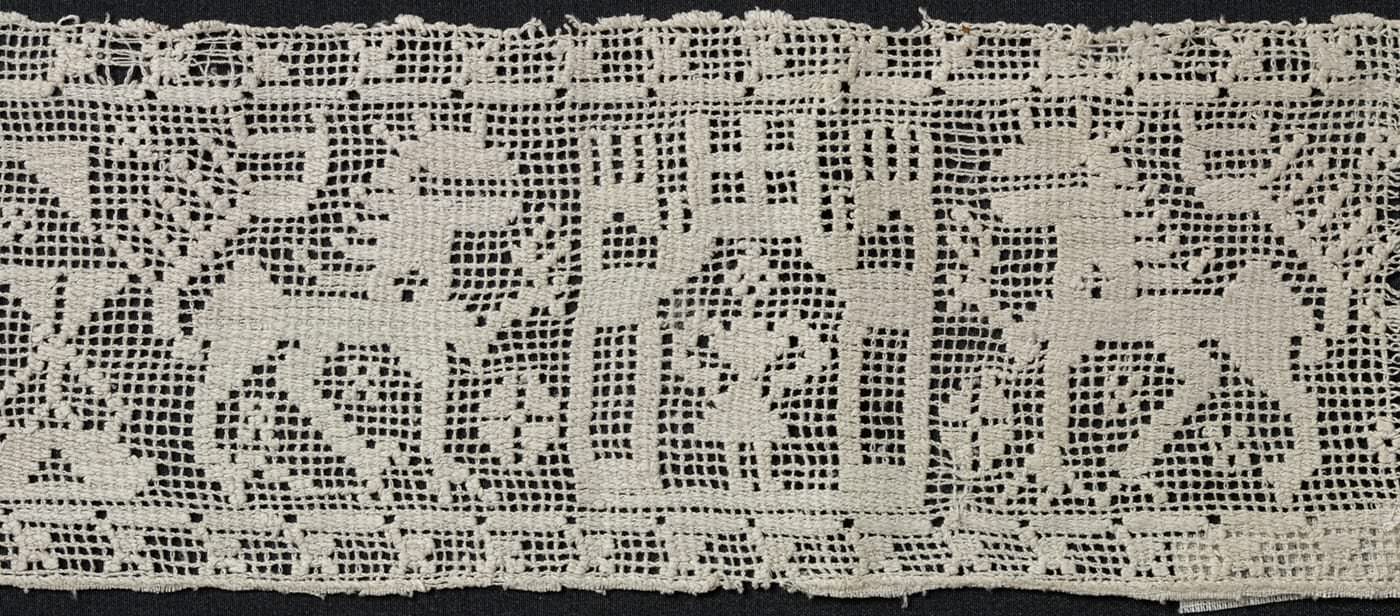
Rundāle Palace Museum, Italy, 17th century. Motifs: palace, ship, fantasy lions
11 x 42 cm | Published: Mick Fouriscot. Le secret des dentelles II. Paris, 2000
Another remarkably similar example is documented as Plate XLII in Needlework Through the Ages by Mrs. Mary Symonds Antrobus (Hodder & Stoughton LTD., London 1928) (left), confirming the 16th century Italian origin. It shares the same scene and specific elements and the publication references a companion piece in the Victoria and Albert Museum in London. Mrs. Antrobus writes that the central figure may represent the Virgin Mary. These may have been made as frontal-pieces, perhaps for altar cloths. A reprint copy of this book will accompany our Buratto.
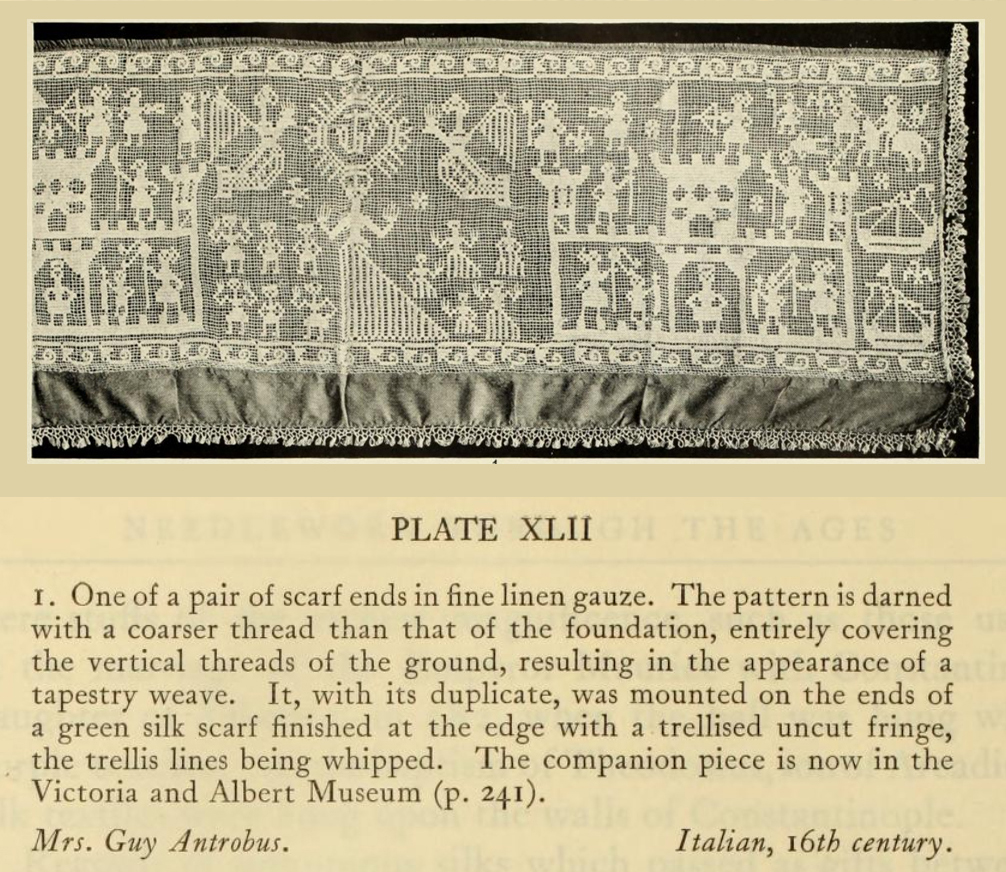
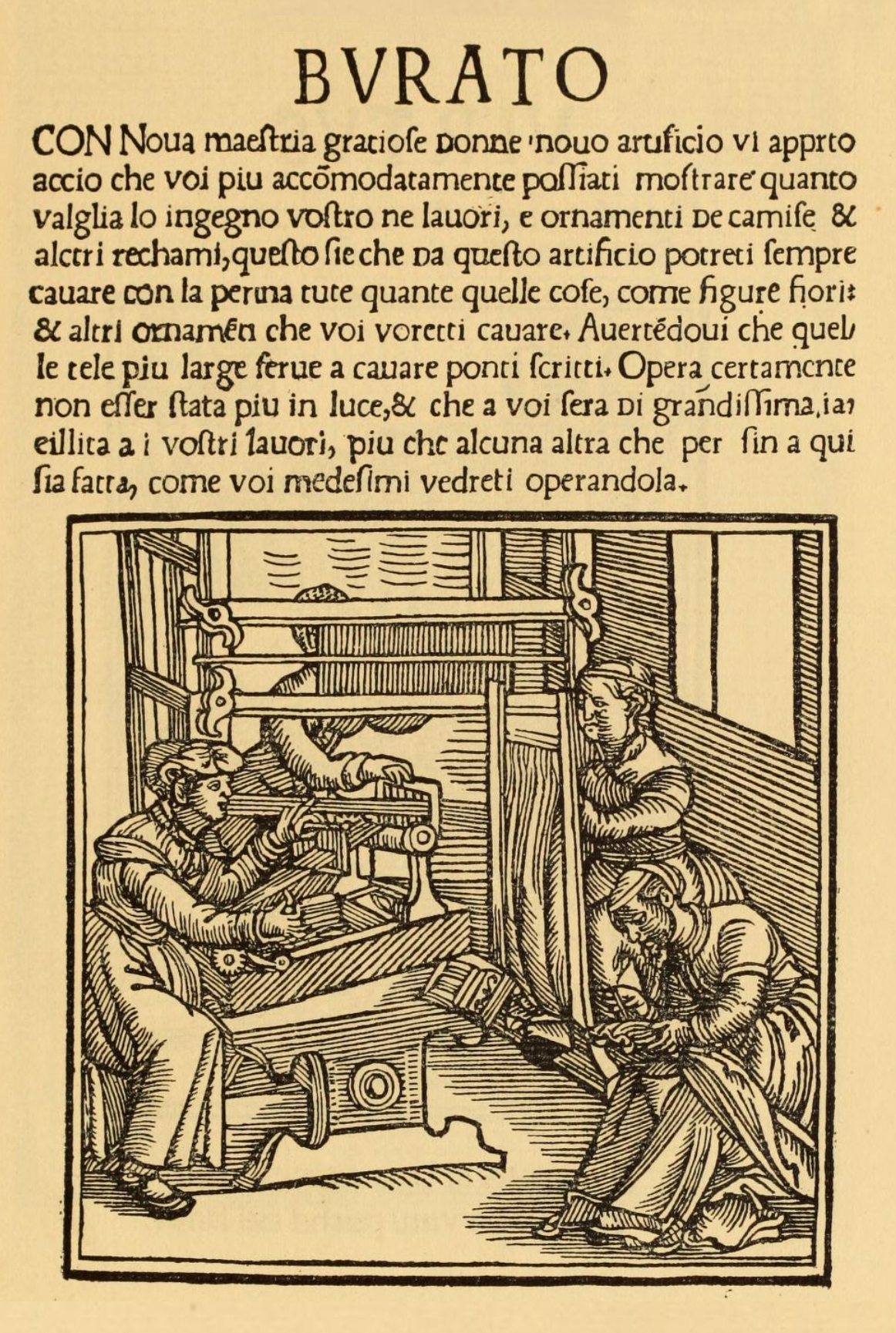
A pattern book, Il burato, Libro de recami [The Buratto, Book of Embroideries], by Alessandro Paganini, circa 1527 (right), was published at the height of the popularity of this technique and is referenced by Jeanine Robertson in various sources, including two articles in Piecework Magazine (Nov/Dec 2010).
Ms. Robertson has researched and written about historic Buratto needlework, which was favored by Catherine de’ Medici (1519-1589), as well as how it could be reproduced today.
Our Buratto, along with the other known examples, was originally meant to be viewed from both sides; the imagery and lettering mirror each other. We photographed the reverse prior to mounting and this indicates very clearly that it is beautifully finished on both sides.
verso image of buratto
Translating the wording on this piece has been perhaps the most difficult detail to ascertain. Jesús Velasco, Yale University, Department Chair, Augustus R. Street, Professor of Spanish & Portuguese and Comparative Literature, was kind enough to offer some insight. He reasoned that the words inscribed use characters from the Berber language’s Amazigh/Imazighen alphabet. Velasco continues, “This does not mean that text is conveyed in 16th-century Amazigh language, as it may be in Sardinian. There is ample Amazigh influence in Sardinia, and Sardinian is a rare Romance language.” If the Amazigh alphabet was used to write in the Sardinian language, this may explain why some characters such as the distinctive “M” and “r” characters are not found in Amazigh alphabet, resulting in a literal translation that continues to prove difficult.

We first came to know of this Buratto many years ago when it was in an important collection in England. While we have done substantial historical research on this piece and others greatly like it, as described above, there still remain questions. We welcome any information that our readers may contribute to expand our knowledge of this very interesting form.
To obtain high resolution images of our Buratto and its verso, please email us at mailbox@finkelantiques.com
Worked in linen on linen, it is in remarkably excellent condition. It has been conservation mounted and is in a fine black frame with a gold leaf inner edge with UV Filter glass.
Please contact us with interest or questions.
Amy Finkel
215-627-7797


